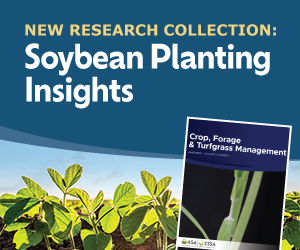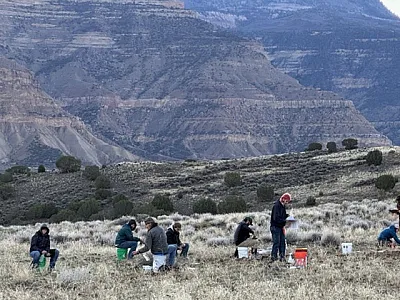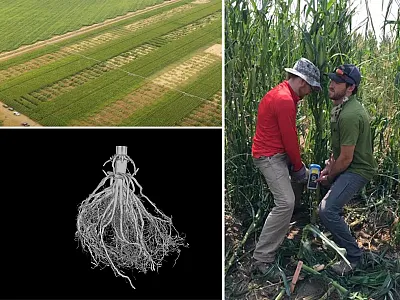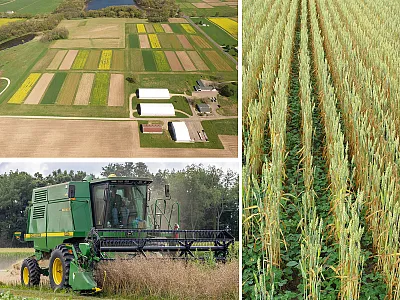Probing dynamic soil properties with thermo-time domain reflectometry sensors
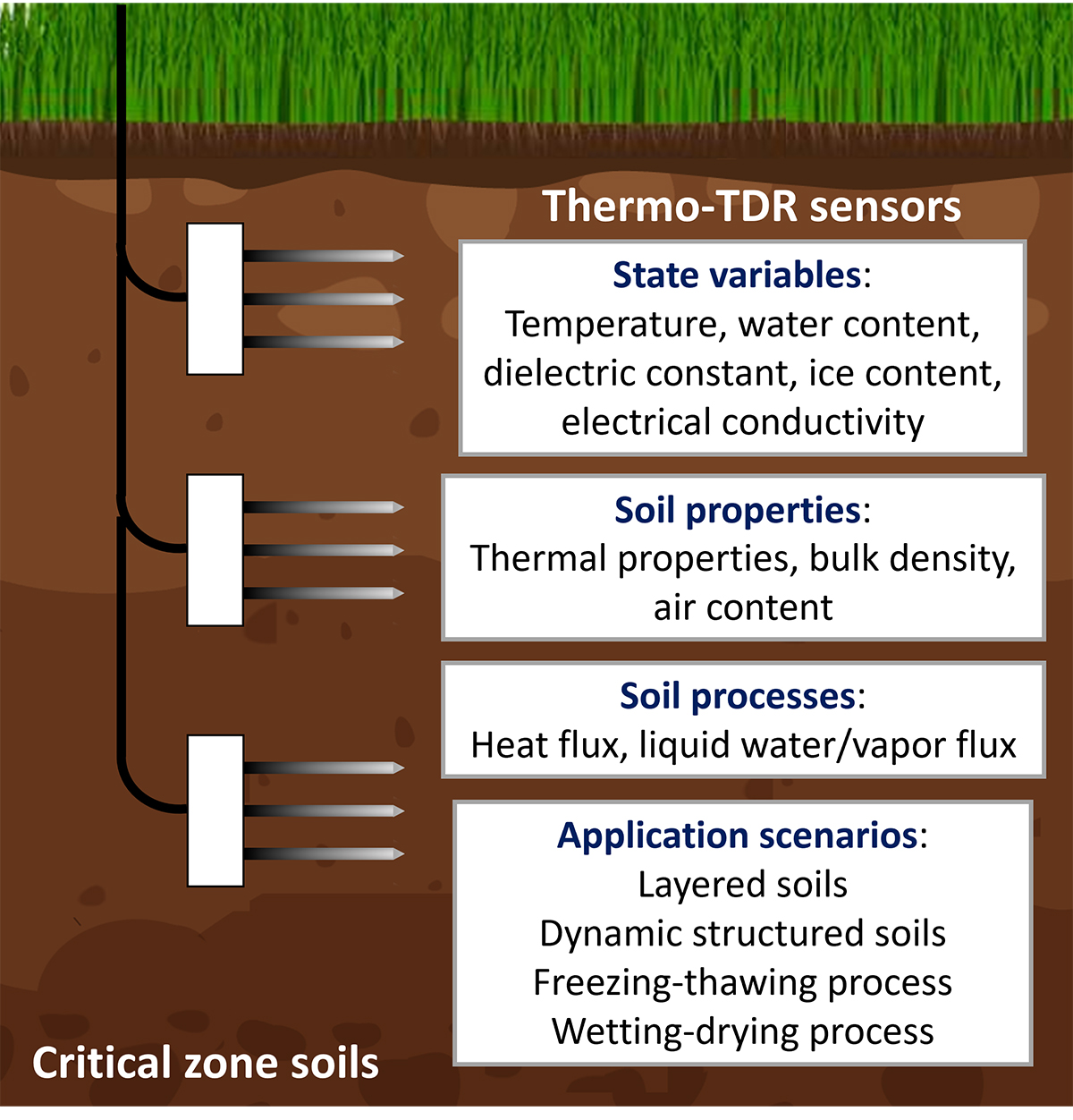
The critical zone interface, the near-surface layer of soil stretching from groundwater to vegetation, is the site of many interactions that impact soil functions. Detailed measurements of these interactions are essential for geoscience studies, but it’s difficult to quantify coupled heat, water, and solute transfer in critical zone soils due to a lack of feasible measurement techniques.
The thermo-time domain reflectometry (thermo-TDR) technique is a state-of-the-art sensor for in-situ observations of several soil physical properties and processes in critical zone soils. This sensor simultaneously measures coupled processes of water, heat, and solute transfer and provides repeated in-situ measurements of several soil state properties (temperature, soil water content, and ice content), thermal properties (thermal diffusivity, thermal conductivity, heat capacity), and electromagnetic properties (dielectric constant and bulk electrical conductivity) with minimal soil disturbance.
In a recent article published in Vadose Zone Journal, researchers explore opportunities for critical zone measurements using thermo-TDR sensors and provide an overview of their functions and applications. Combined with physical or empirical models, structural indicators, such as bulk density and air-filled porosity, can be derived from measured soil thermal and electrical properties. Successful applications are available to determine fine-scale heat, water, and vapor fluxes with thermo-TDR sensors, particularly in complex scenarios such as heterogeneous root zones and saline environments. Therefore, the sensor’s multi-functional use allows for tracking water and heat processes associated with soil structure development in critical zones to better understand structure-dependent soil functions.
The thermo-TDR technique can be integrated into hydrological observation networks for observations of transient soil physical processes at local scales. The sensors can provide reference observations for thermal and hydrological regimes of frozen soils in cold region critical zone research.
Dig deeper
Lu, Y., Liu, Y., Peng, W., Fu, Y., Ren, T., Heitman, J., & Horton, R. (2025). Monitoring dynamic water content, bulk density, and heat and water fluxes in the critical zone with thermo-time domain reflectometry sensors. Vadose Zone Journal, 24, e20390. https://doi.org/10.1002/vzj2.20390
Text © . The authors. CC BY-NC-ND 4.0. Except where otherwise noted, images are subject to copyright. Any reuse without express permission from the copyright owner is prohibited.




